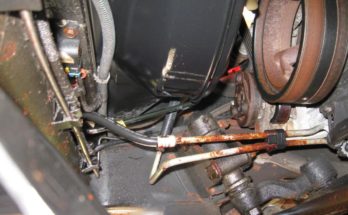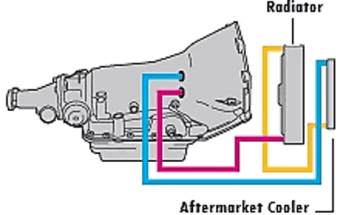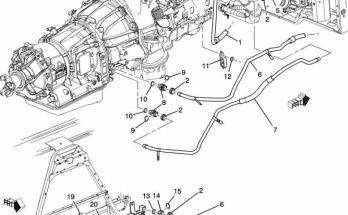Transmission Cooler Line Information
Get all the transmission cooler line information you need to repair, replace, or make your own custom lines for your project. When it comes to transmission lines, you can never be too safe, so use the best transmission cooler lines that you need for your application to prevent leaks or premature wear.
Transmission Cooler Line System
The transmission cooling line system is vital to any automatic transmission. It circulates the hot fluid away to the radiator via cooler lines and returns the cooled fluid back to the transmission. A loss of fluid leading to an overheated transmission can be devastating as the system loses its ability to cool.
Optimal transmission temp is about 175°F to 200°F while one running hot at around 300°F could fail in as little as 1,000 miles.
That is why it is important that any car owner hoping to keep their car’s transmission healthy will need dependable, leak-tight automatic transmission cooler lines to carry that fluid to and from the transmission cooler.
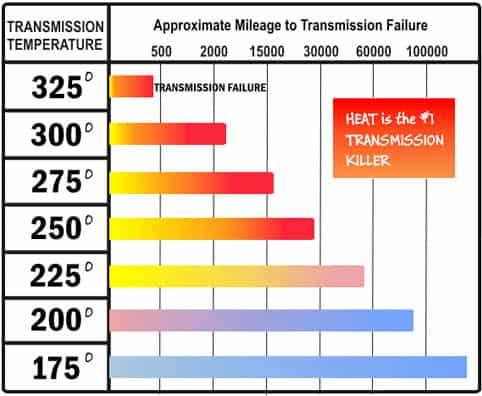
Transmission Fluid
One small advantage of a standard transmission car is that it can use any variety of lubricating oils. Automatic transmissions need specific types of fluids as recommended by the car’s manufacturer. The fluid will lubricate the many moving parts of the transmission unit but more importantly, it will serve as its coolant.
Automatic transmissions rely on fluid to properly operate and stay cool, so because of this, transmission lines are needed to properly move the fluid to throughout the cooling system to prevent over heating.
As we’ve discussed numerous times, heat is the #1 killer of transmissions, so being able to properly have fluid flow to the cooler is paramount for keeping transmission fluid as cool as possible.
Transmission Oil Cooler Line & Hose Components
Think of the transmission as a box, or container of moving parts. Don’t worry too much about what happens inside that container. It’s a marvelous example of mechanical innovations but a bit too complicated for the scope of this article. The trite saying “think outside the box” is apt when discussing automatic transmission cooler lines. For our discussion simply know that two cooling tubes are attached to the transmission, the hot and cold lines mentioned earlier.
One component inside that “box” is a small pump that circulates the transmission fluid. It feeds the hydraulic system and pumps fluid out of the transmission via the hot line. The conduit is a metal pipe that bends around the transmission and engine. The configuration will vary depending on the make and model of the vehicle and it terminates with transmission cooler line fittings.
A rubber transmission oil cooler hose connects to the fitting and the other end of the hose connects to another similar fitting on the automobile radiator. Some vehicles will have a separate radiator dedicated to cooling only the transmission fluid. Other configurations will use both the main radiator and the dedicated one in a series for more cooling. The return cooler line is attached in a similar fashion completing the cooling loop.
The repair or replacement of the tranny cooling lines may seem like a simple matter of removal and replacement but their location in the engine and the interference of other engine parts will be a challenge, especially for the not as skilled DIY mechanic.
Common Transmission Cooler Line Issues
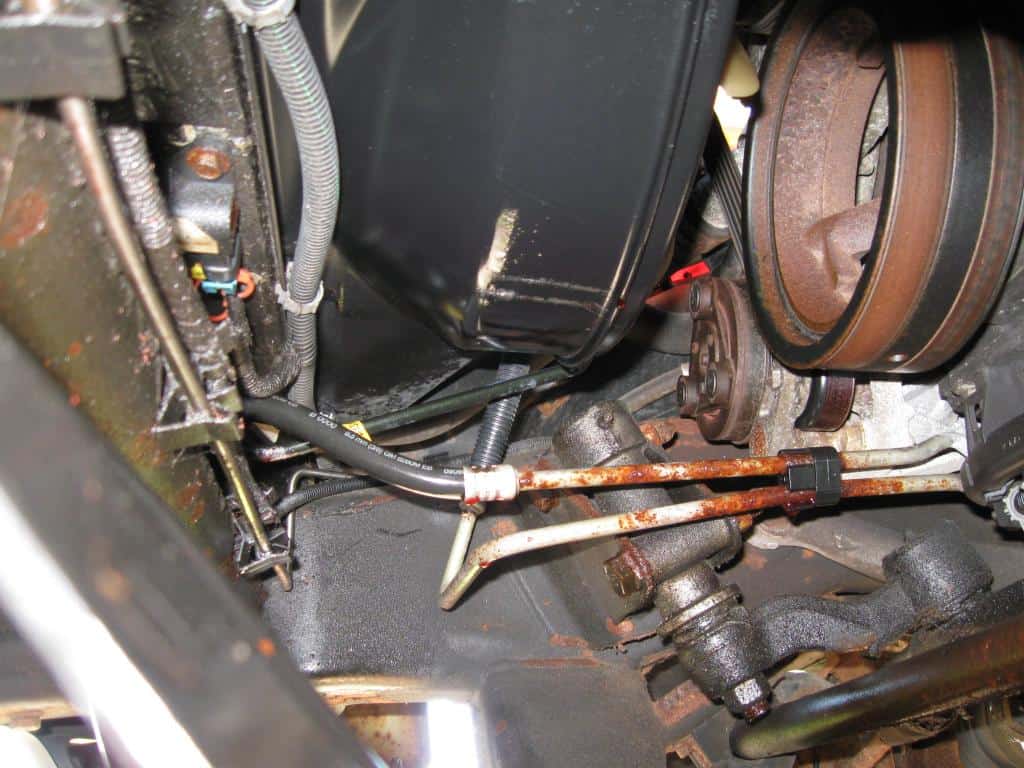
Let’s look at five common problems that occur with automatic transmission cooler lines and fittings and identify the probable cause:
- Oil leaking or “weeping” from the hose or coupling can be caused when the hose deteriorates at the crimp site due to excessive heat.
- Exterior damage can be a result of oil contamination to the hose, prolonged exposure to ozone from auto exhaust, excess heat wear from any abrasion, and road debris.
- Coupling separation is normally a result of oil contamination and once again excess heat causing hose reinforcement separation
- Split or dented tubing can be due to road debris, rust aggravated by high salt concentrations or simply an impact from an accident.
- Leaking at threaded terminations can be caused by worn O-rings and gaskets, improper installation or the threads have become stripped for some reason.
The best way to keep any of these from developing into a larger problem is to check the engines’ fluid levels often and take a few minutes to inspect the transmission cooler line fittings. Take action if a small red puddle of fluid is on the ground or pavement beneath the car.
Types of Transmission Cooler Lines
Transmission oil cooler lines & hoses come in all shapes and sizes. There are 4 main types of transmission cooler line types including:
- Metal – Metal transmission cooler lines are typically your factory style cooler line. these are usually pre-bent and are application specific. There are also individual metal transmission lines that are universal and may come with a fitting already installed.
- Rubber – Rubber transmission lines are universal in most cases, but come as a part of the larger pre-bent metal lines on factory applications. Rubber hose is inexpensive and easy to get if you need it for a quick fix to hold you over.
Braided Transmission Lines
- Nylon Braided – Nylon braided transmission cooler lines are more costly than standard rubber transmission line, but have a stronger outer nylon layer to prevent rips.
- Steel Braided – Steel braided transmission lines are the most costly of any standard transmission line. Link its name indicates, like nylon, this style of transmission line has a steel braid as its outer coating making it highly impact and tear resistant.
Metal Transmission Cooler Lines
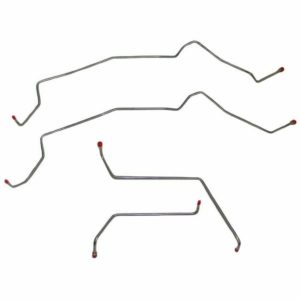
Metal transmission cooler lines are typically pre-bent with fittings that are held on by a flare at each end of the line. This type of transmission cooler line is found on your vehicle from the factory and is typically made from steel.
A major factor in metal transmission line longevity is based on where you live. Steel transmission lines that are exposed to salt because you live in an area that sees snow may rust out over time which will cause leaks, and will need to be replaced.
Depending on your vehicle, these may be very straight forward to replace, or can be a pain due to the space and the bends in the lines.
Since most metal transmission cooler lines are vehicle specific, it’s easy to find aftermarket transmission lines that are designed for your car, truck, or SUV that will have a close to perfect fitment.
Rubber Transmission Lines
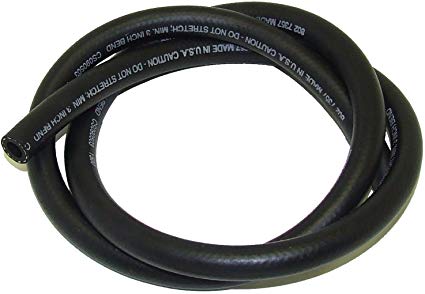
Often people will ask “can I use rubber hose from transmission cooling lines?” Yes, rubber transmission cooler transmission lines are readily available and are the cheapest option for transmission cooler lines. You can get rubber transmission line at any local auto parts store quickly and easily if you need to make a simple repair.
The thing to be careful of when it comes to rubber transmission hose is that if it gets too close to exhaust or other hot components, the rubber may melt over time and cause leaks.
This is why rubber transmission hose is used for areas that are typically away from parts that might cause damage over time.
More often than not, your vehicle will have some rubber lines from the factory, but not nearly as much as it would metal.
Rubber Transmission Line Uses
Rubber transmission cooler hoses are great for adding in an external cooler, or for a temporary fix on a leaving metal line. It’s common to repair transmission line with rubber hose as a quick fix, but it is recommended to take care of the broken line and make a more permanent and long term repair.
Nylon Braided Transmission Cooler Lines
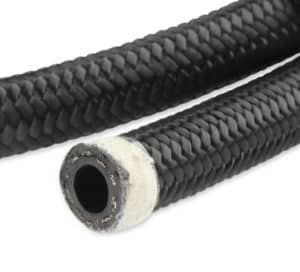
Nylon braided transmission cooler lines, like their name indicates, are rubber lines encased in a protective nylon cover. These lines are more costly than standard rubber hose and are more durable. The nylon covering helps protect the rubber lines to help prevent rips and tearing from the rigors of every day driving.
Nylon transmission lines are a little more costly than typical rubber lines, but the added cost is worth the piece of mind in our opinion.
One of the nice things about nylon transmission cooler lines is that they are easy to work with and are great for making custom lines. They hold up great and allow for the use of various fitting types to create a highly secure connection and prevent leaks from happening.
Steel braided Transmission Cooler Lines
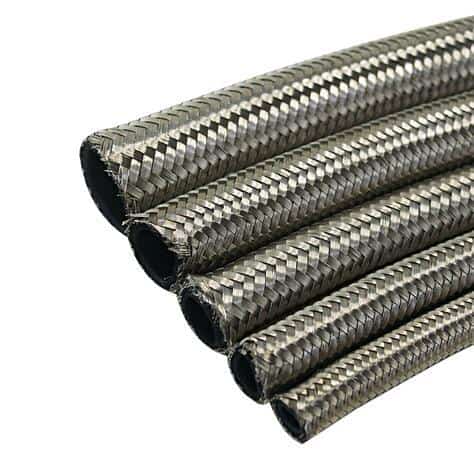
Just like nylon lines, steel braided transmission cooler lines have a durable cover over the rubber lines. These are far more durable than rubber and are also stronger than nylon.
With that added strength comes added cost. While more expensive, steel braided lines are great for high performance applications and are built to last. When it comes to building custom transmission cooler lines, the motto “buy once, cry once” applies here since you are paying for a very high quality lines.
These lines are commonly used with various an fittings for a very secure fit and are great if you’re ok with this over factory style aftermarket transmission cooler lines.
Hose Clamps
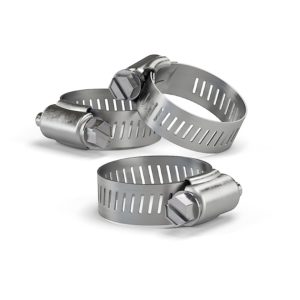
Worm clamps are very cost effective and common for rubber transmission lines. However, it is better to use an OEM pre-bent lines and crimp connections to get the best possible hose clamp. That is not to say these cheap clamps are bad, but wherever possible,
The flexibility of the rubber hose will absorb engine and road vibration, but the assembly must be able to handle internal pressures up to 300psi along with the high temperatures. Do you really want to risk your transmission on a $1.00 hose clamp?
Transmission Line Fittings
Transmission cooler fittings come in various shapes and sizes with many purposes. Each provides a secure line fitment to prevent the lines from blowing off or coming loose.
Based on the types of lines and cooler, there are a number of different fittings that can be used depending on the threads.
- NPT or AN to Barb – used for transmission cooler to rubber line
- AN To NPT – Used for transmission cooler to an fitting to braided line
- Barb to Barb – Used to connect two rubber lines together. These fittings are common for when you install a transmission cooler and keep the existing rubber lines on the vehicle.
Standard Transmission Cooler Line Fitting
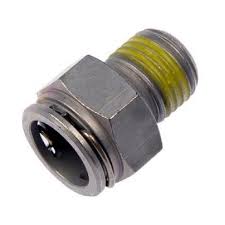
This type of fitting is found on both the transmission and radiator where there is a pre bent transmission line. The metal transmission cooler line is held in place by a small clip in the fitting, as shown below
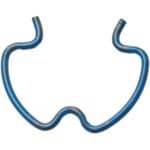
These types of clips are known for notoriously being a pain to remove, then once they’re removed, they tend to go flying once free.
Word of advice: if you plan on keeping this style of fitting for your vehicle, be sure to have a few extra clips in the event that
Barb Fittings
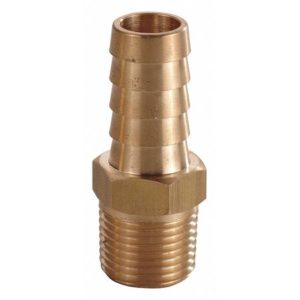
Barb fittings are the most common type of transmission cooler line fitting, and it used with rubber lines. These fittings are a push fit type that allow for a standard hose clamp to keep the transmission line in place.
When it comes to installing an aftermarket trans cooler, barb fittings can be used on the radiator transmission fluid outlet for rubber hose to run to the cooler.
These fittings are very cost effective and are typically only a few dollars at most and comes in packs with multiple fittings.
Most transmission coolers that come with universal installation kits will provide various barb fittings to help you install your new cooler easily.
AN Fittings
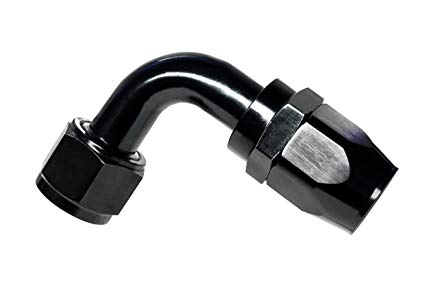
AN fittings are more costly than barb fittings, but make for a very secure and clean transmission line installation. We recommend AN fittings on any type of high performance type of vehicle such as racing or off-roading.
These fittings come in a variety of sizes and have any angle you may need to make installation easy depending on your application.
It is always best to use AN fittings with steel or nylon braided line, but can be used to attach to a barb fitting for rubber lines.
Transmission Line DIY Tips
DIYers may be tempted to use any hose available in the garage but only new high-quality hoses made with chlorinated polyethylene (CPE) with a Hypalon cover (Hypalon is a synthetic rubber material resistant to chemicals, temperature extremes, and ultraviolet light) should be used. The sizes can run from 5/16 inch to 5/8 inch so that DIYer will need to be careful to choose the right size hose.
Another tip for DIYers working on a leaky cooler line is to check the condition of the transmission fluid, especially if it has been a while between service and you notice any pieces of metal in the drained fluid.
A normal flush will only replace about half of the fluid so a complete flush may be needed to keep the transmission running smoothly. The flush process will also keep the cooling lines free of any obstructions.
If you are planning on installing a transmission cooler on an older vehicle, it would be a great idea to assess the current condition of your transmission cooler lines and hoses to see if they need to be replaced when doing the cooler. It would be a major hassle doing two separate jobs on the transmission cooling system when it comes to time and fluid costs.
Transmission Line Replacement Cost
If you have the skills to tackle this job yourself, it may be best to take your vehicle to a mechanic to replace the lines for you.
Replacing an automatic transmission can cost thousands of dollars while a cooler line replacement will cost up to about $500 at most.

